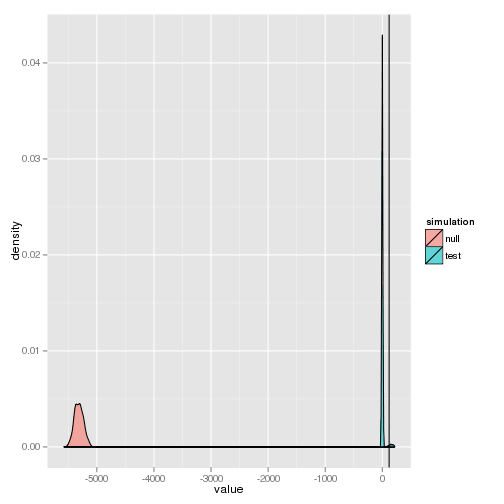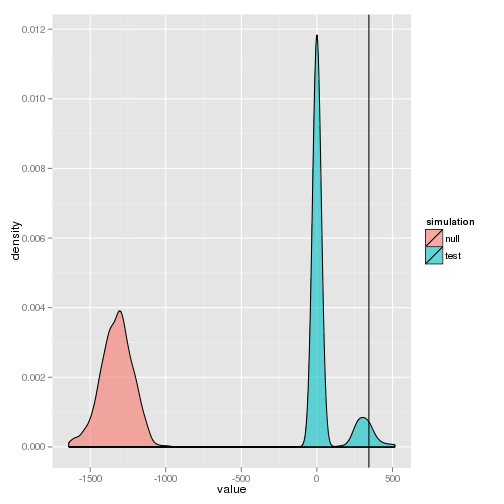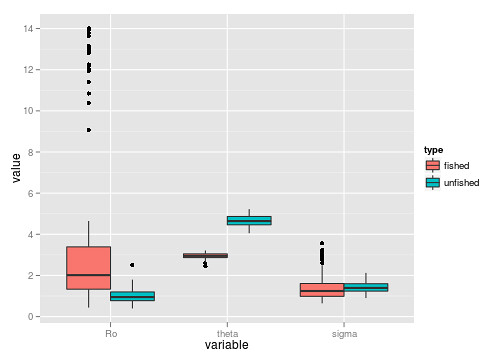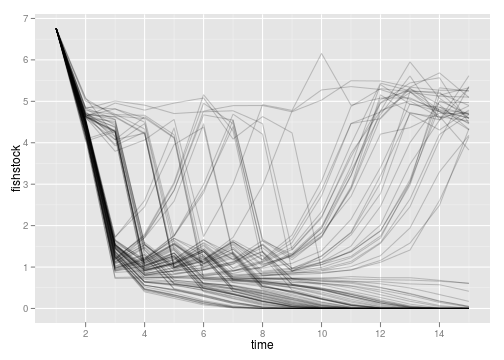- NSF goals:
- combine control methods and warning signals
- do non-parametric or machine learning increase or decrease chance of transition
- learning
- Further areas (from comment piece)
- baselines (statistical; emperical)
- context-specific (additional data sources, reflecting context in model)
Warning signals in managed systems
Management decreases the signal: compare likelihood statistic in unmanaged_warning managed_warning:


Estimating Stability in managed systems
Recovery rate in optimally fished vs unfished system (based on the OU model): stability.md

- How would a use of a signal feed back into a control algorithm? Need probabilities of possible models for driving a belief SDP?
Learning
Learning about a tipping point: models are the correct allee-threshold (Myers) model, and the best-fit Beverton Holt model. Inability to learn fast enough leads to crashes model_uncertainty.md

- Active learning about parameters can be worse than not learning?